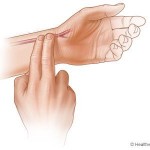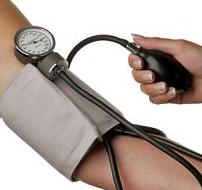How to Check Pulse Rate Manually
posted by: Rio Dianne
 Vital signs including blood pressure, pulse rate, number of respirations and temperature are essential since they can tell so much about a person’s risk for any life threatening conditions especially if they have illnesses. We all know that having high blood pressure is enough to be alarmed and so are rapid breathing, and high and low pulse rate and temperature. Still, you don’t have to fear if results are abnormally high or low since there are factors that can affect it which are not fatal though. Since we’re already talking about vital signs, in our post today, we’ll tell you how to check pulse rate manually. Find out and learn more below.
Vital signs including blood pressure, pulse rate, number of respirations and temperature are essential since they can tell so much about a person’s risk for any life threatening conditions especially if they have illnesses. We all know that having high blood pressure is enough to be alarmed and so are rapid breathing, and high and low pulse rate and temperature. Still, you don’t have to fear if results are abnormally high or low since there are factors that can affect it which are not fatal though. Since we’re already talking about vital signs, in our post today, we’ll tell you how to check pulse rate manually. Find out and learn more below.
How to Manually Check the Pulse Rate
A pulse rate refers to the measurement or the rate at which your heart beats per minute. The results usually from one person to another and differ with age. The pulse rate may be fast when it is affected by factors such as physical activity like in the case of athletic persons, and may be slow or decreases when an individual is at rest as in the case of resting heart rate.
Apparently, the pulse can be found on different parts of the body such as the on neck, wrist, groin, in legs, and in feet. But the most common site used is the radial pulse or the one felt in the wrist. Perform the following on how to check pulse rate manually:
- Allow the person to rest first for atleast 10 minutes before measurement.
- Place the patient’s hands on a flat surface with palm facing up.
- Check for the radial pulse, by placing your index and middle finger on the inside part of the wrist particularly just below the thumb area. Never use the thumb as it has pulse as well which may give you a false result.
- Count the beats of the pulse for a full minute with the help of the second hand of the clock. Pulse may be irregular in rhythm which is why it would be better to count in for 60 seconds.
In adults, the normal and the average pulse rate is between 60 – 100 beats per minute while the result is usually high in infants and children. Irregularity in rates does not necessarily mean a disease, but can be an underlying sign of a certain condition. Make sure to monitor you pulse rate regularly. Good luck!
You might also like
|
|
|
|
|




